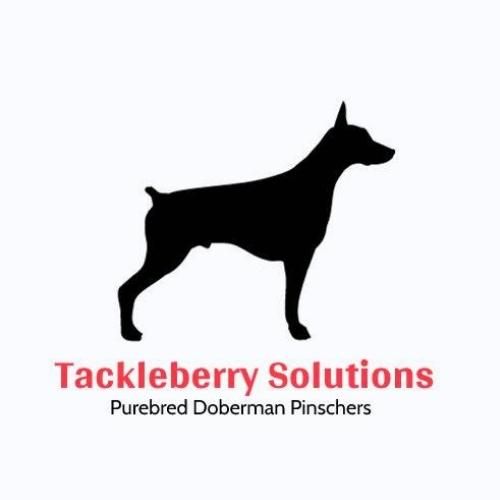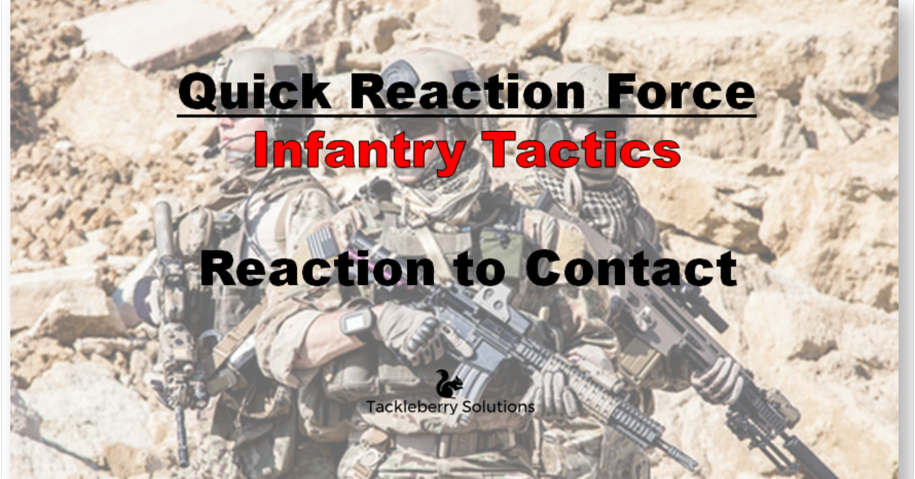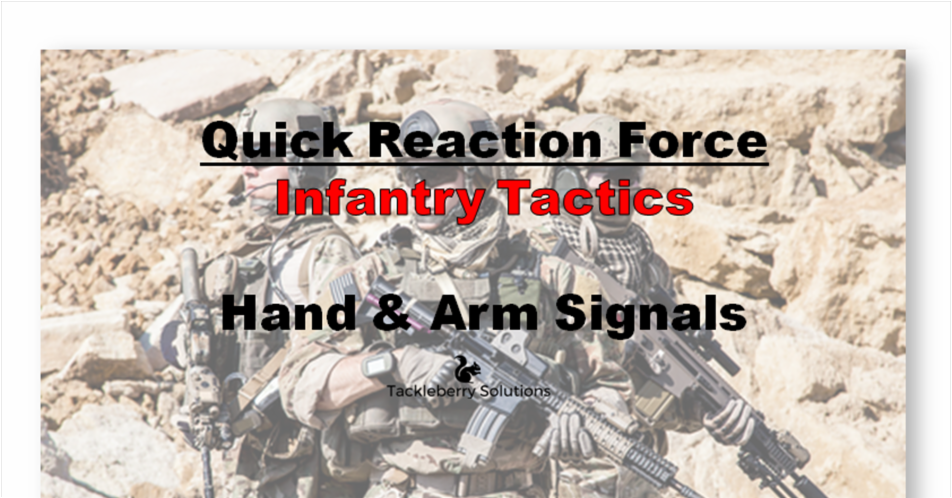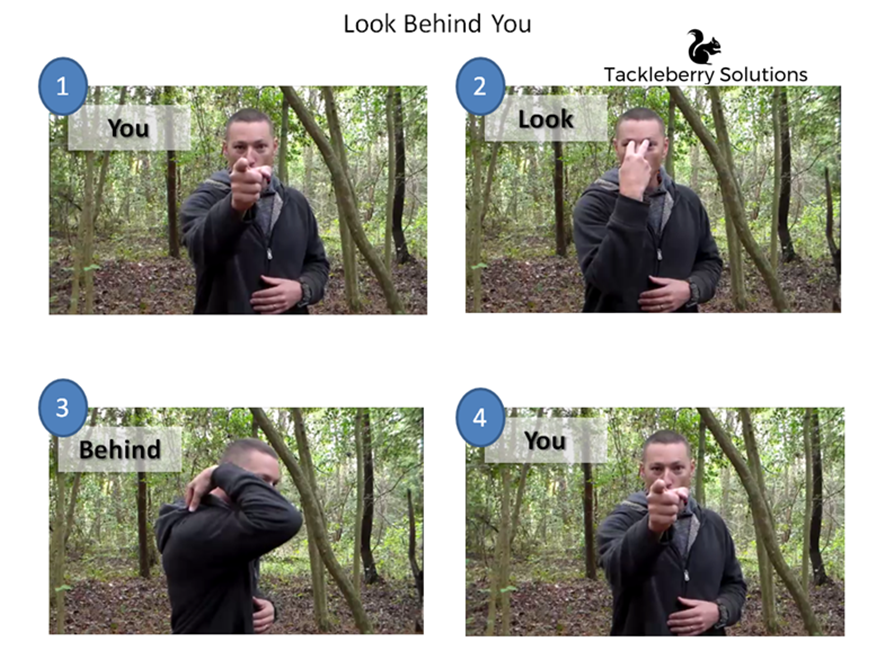Recovering the Wounded During Battle
QRF Infantry Tactics
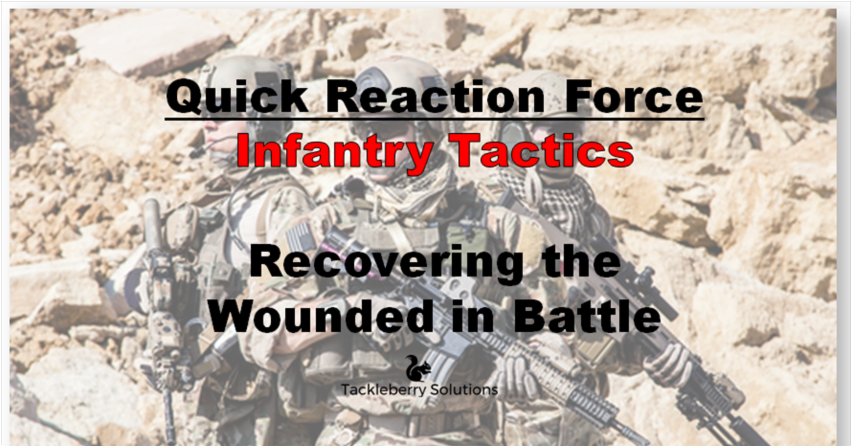
There are 3 ways to recovering the wounded from danger during a time of war. This article covers each one and how it can be done.
This article is part of a series we are using to teach QRF Infantry Tactics. Here is an outline of the free lessons. They are numbered in the order they are taught in the printed book.
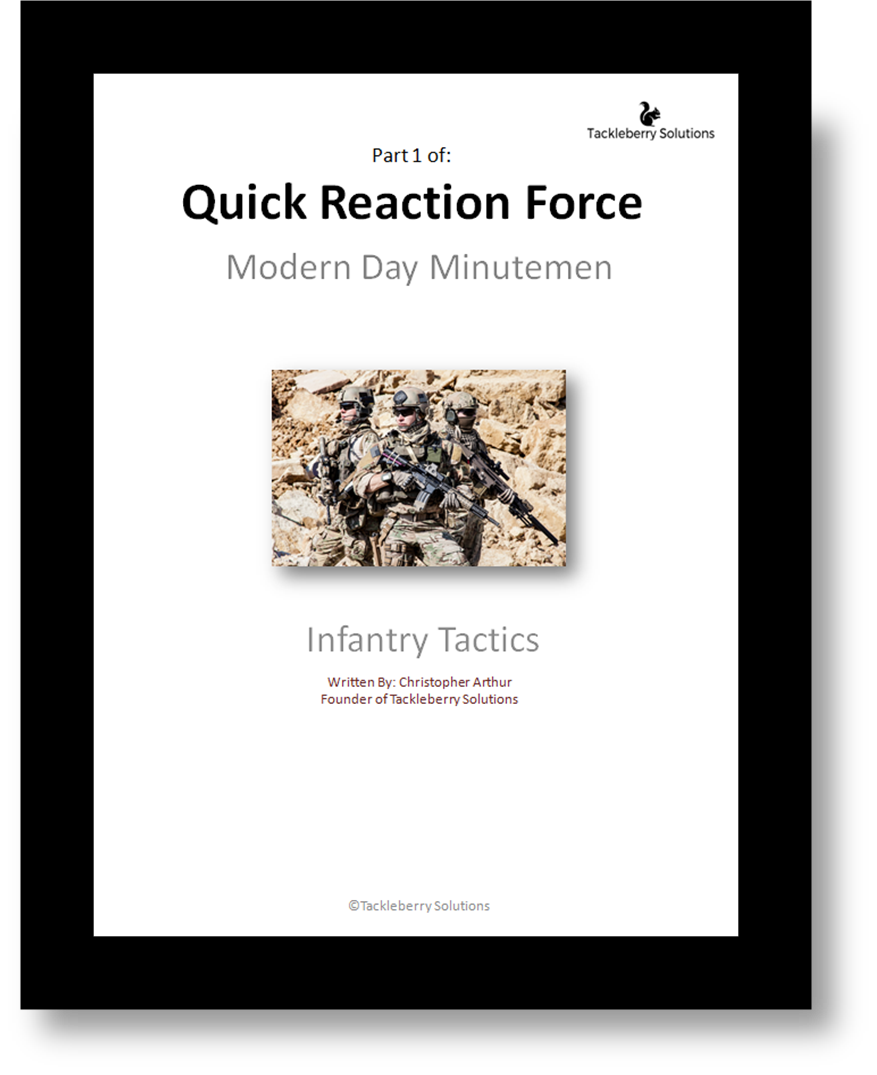
- How to Form Your Own Platoon
- How to Travel During Wartime Without Getting Ambushed
- Hand & Arm Signals - Communicate Silently
- Prisoners of War
- How to Remove the Injured From Battle
- Reaction to Contact (How to Respond if You Get Attacked)
- How to Stop an Armored Vehicle
- Convoys and Obstacles
- How to Identify, Locate and Avoid Landmines
- Fighting Back: How to Ambush Your Enemy
- Fighting Back: Tactical Formations
- Breaking Contact (How to Retreat)
- How to Conduct TCPs (Traffic Control Points)
- A Letter to the Commander (How to Keep Your Men Alive)
- A Story of Battle (What a Real Ambush Looks Like and How I Lived Through It)
Introduction - Recovering the Wounded
*Important Note* This is lesson 5 of our QRF Infantry Tactics series. Click here to read the article on lesson 1.
Below you will see a summery of the article, "How to Handle Prisoners of War" Each section is linked so that you can go straight to the topic you're interested in learning about. Use the "Back to Top" button on the bottom right to navigate back up to the article summery if you want to view a different topic. Or you can simply scroll up or down if you want to take the time to do so.
If you have any questions at all about the tactics or methods mentioned in this article, you can ask by either leaving a comment at the bottom of the article, sending us an email to prepare@tackleberrysolutions.com or you can even call Arthur directly at 919 - 223 - 7741.
Article Summery - Recovering the Wounded
How to Recover the Wounded in Battle
Video - Recovering the Wounded During Battle
The Fireman Lift & Carry - Recovering the Wounded
This is the original method the military uses (adopted from firefighters) to pick up an injured soldier. It takes a lot of time and effort to accomplish, but it will never fail.
First you’re going to lift them into a sitting position and then grab them around the chest under their armpits.

Then you are going to pull them up to a standing position.
Be sure their legs stay locked out, or they will collapse on you.
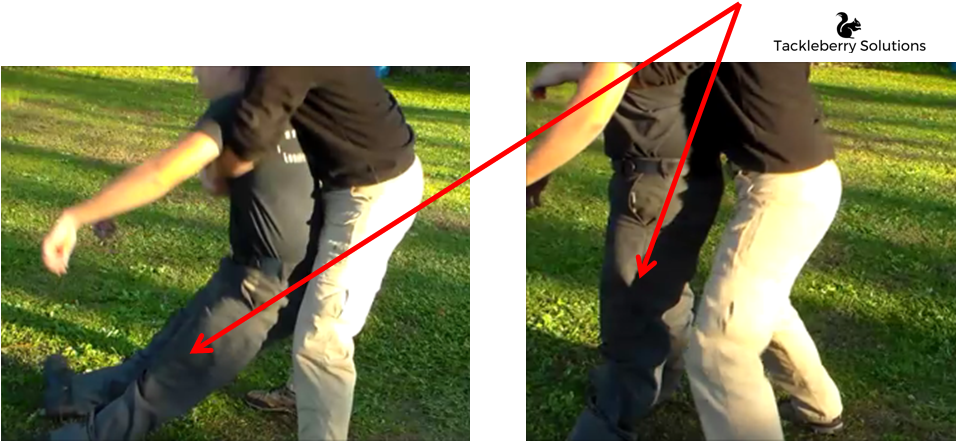
Support them upright while you move around to their front. Then bend over, pull their arm around your shoulder and wrap your arm around the back of their knee.
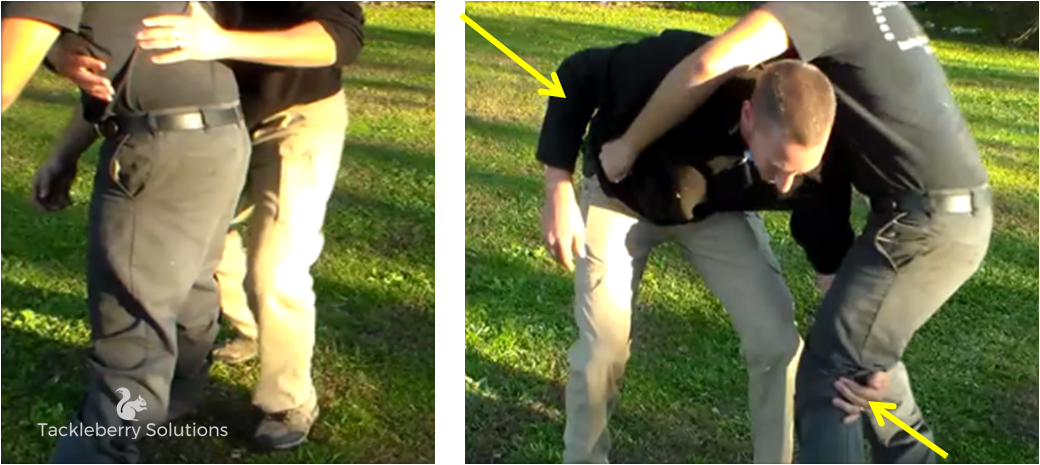
When you stand up, they should be draped across your shoulders like a sack of flour.
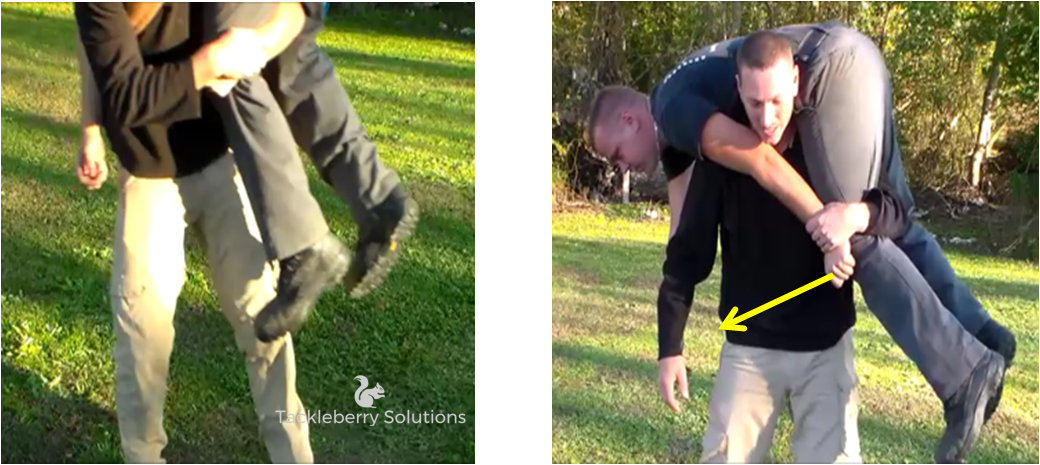
Notice how the arm that is holding their knee also secures their arm to keep them from falling.
This enables you to keep your shooting hand ready so that you can draw if you need to.
The Combat Roll - Recovering the Wounded
The Combat Roll is a fancy new way to get your buddy up fast.
Side note: As an EMT, I don’t like this move. I feel that you could seriously injure your buddy trying this. I prefer to use the rope drag, I feel its safer for the rescuer and faster.
Start by getting them on their back and bringing their arms to their sides.
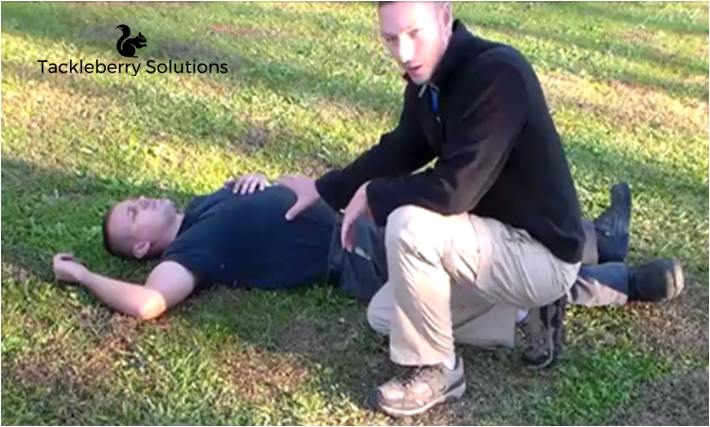
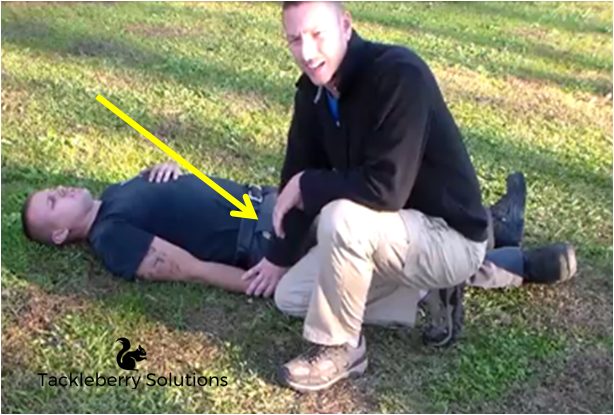
Then you’re going lie down next to them with your shoulders against their stomach.
Grab their farthest leg and pull it to your shoulders.
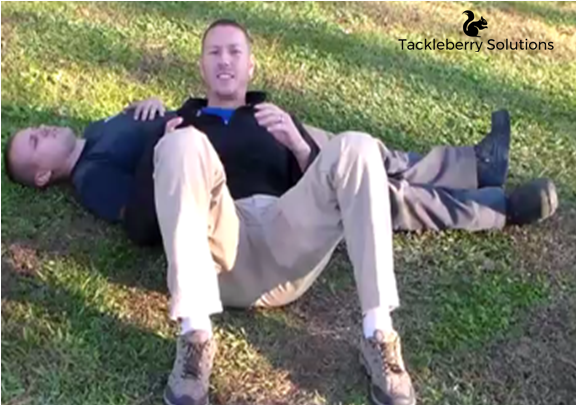
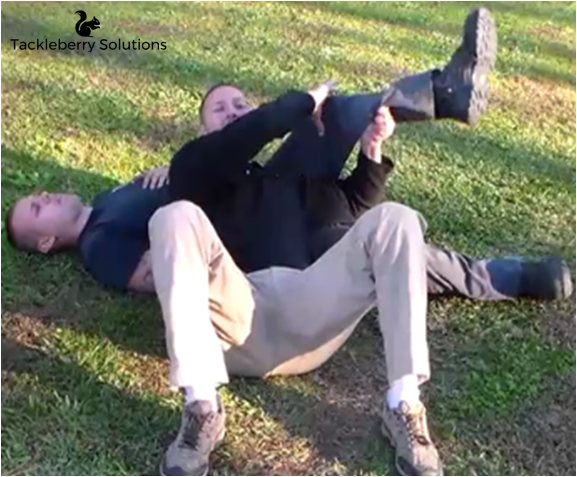
Now that you’ve got their leg across your shoulders, you need to create forward momentum by swinging your body the opposite direction.
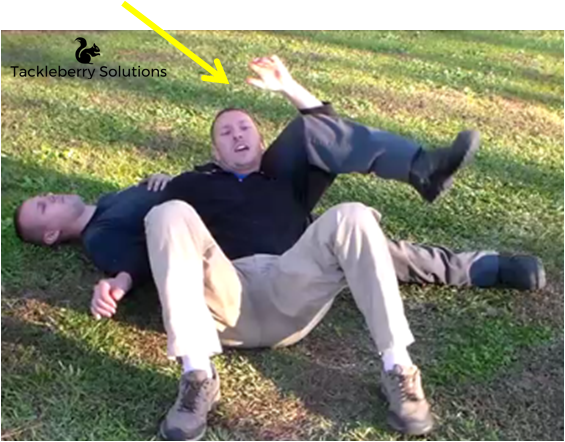
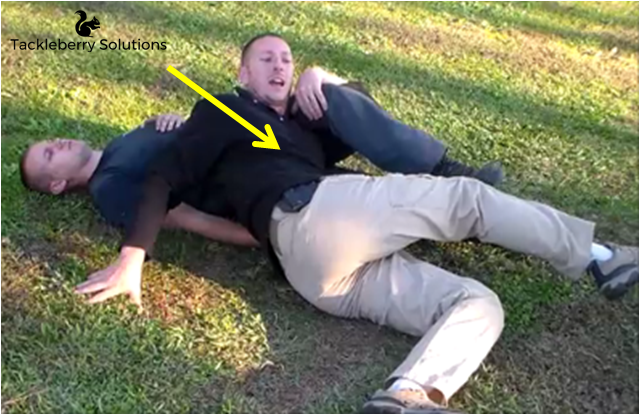
Roll the other direction with as much force as you can so that you can propel yourself onto your knees and stand up.
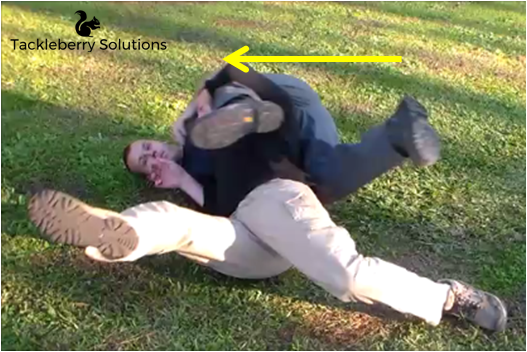
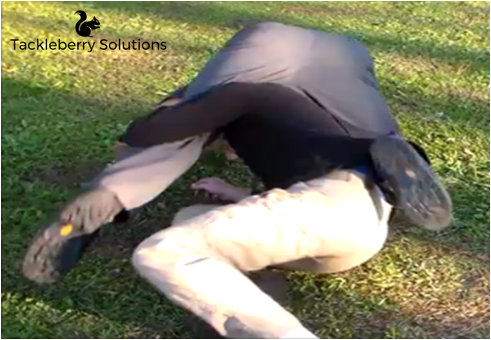
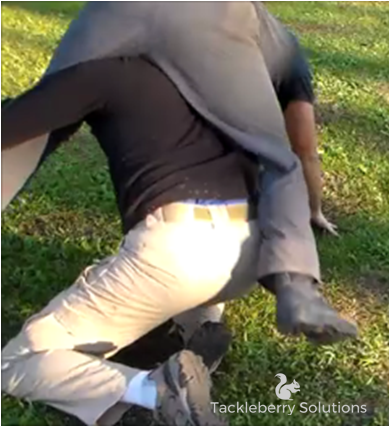
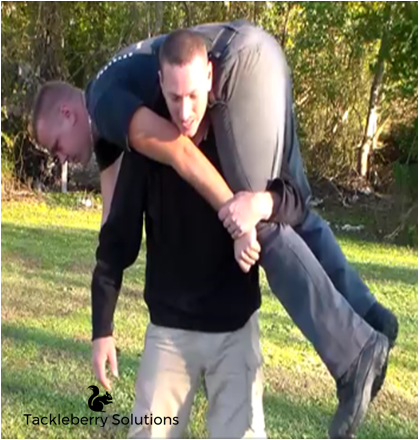
This position is known as the Fireman’s Carry. It is the best way to move that much weight long distances. Even if you use the rope drag (that’s up next) at some point you will have to lift them
To carry them a long distance to a medical evacuation vehicle.
The Rope Drag - Recovering the Wounded
If the fighting is still ongoing and you attempt to rescue your buddy (you're not supposed to do this until the fighting has stopped, but it happens) use the rope drag. This is good for short distances to get your buddy behind cover.
Note: The rope is ran through the plate carrier’s Mollie loops and connect to the belt. This is
usually done with a D ring systems. But I wanted to use a rope yall could easily see.
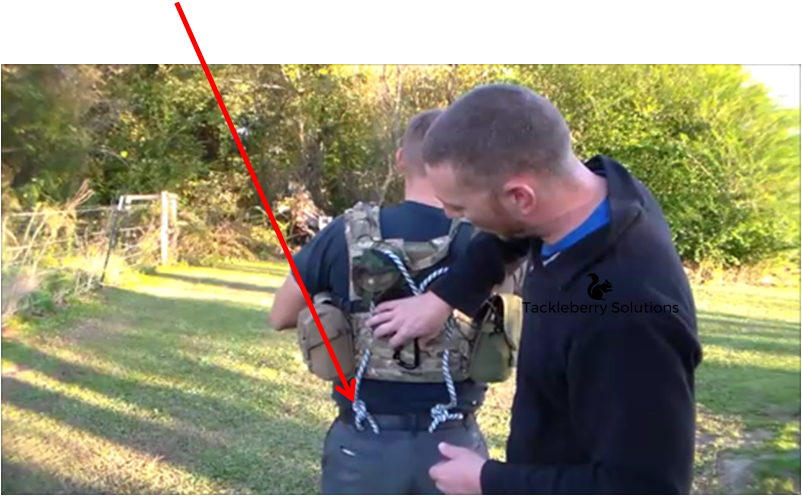
Use a 6’ rope and leave a loop at the top with a D ring in it.
This is to be velcroed to the back of the plate carrier. When you (the rescuer) approach the wounded, lift them to the seated position and take cover behind them.
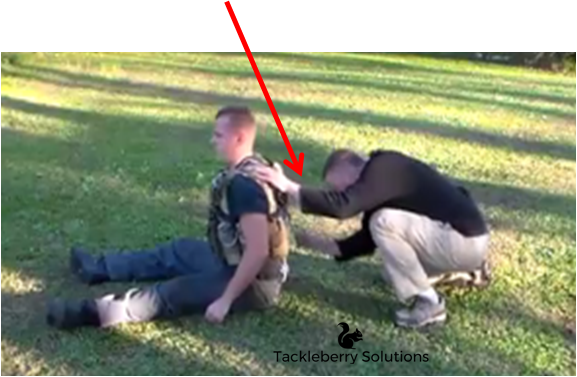
Be sure to secure their D ring to your rigger belt.
Then stand up and walk backward while laying down suppressive fire and dragging your buddy behind cover.
Note: The standoff between rescuer and wounded man - the 6’ rope gives you enough room that you won’t kick your buddy in the back while moving backwards.
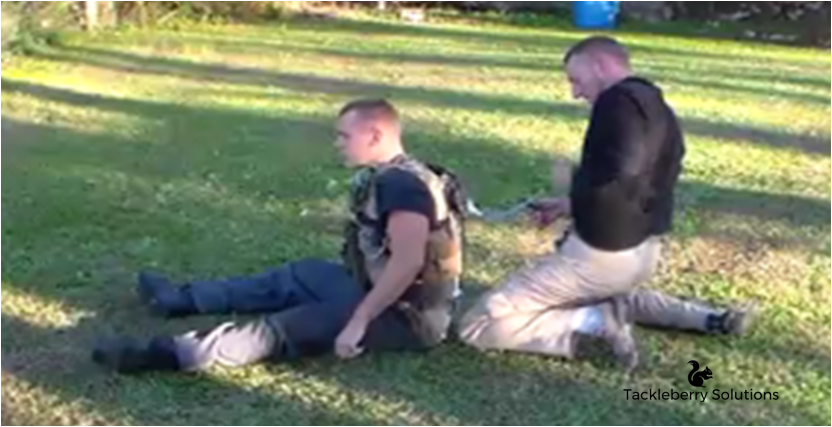
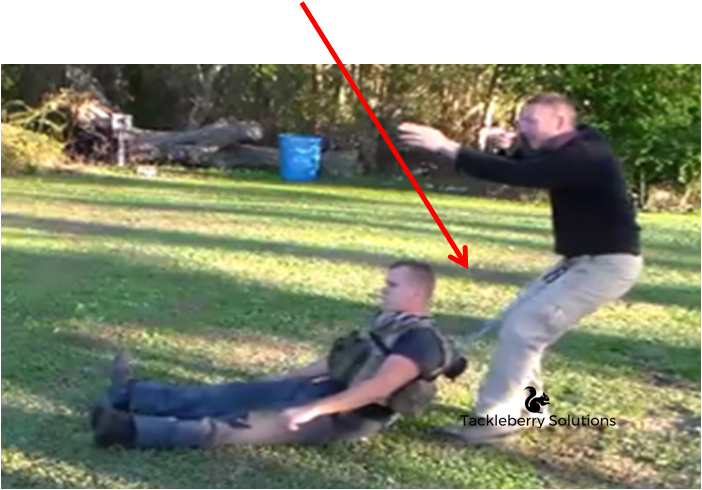
Side Note: While I have never used this, we do train to do this. Furthermore, we all have this rope system on our plate carriers. Those that have used this method, in real life, swear by it.
How to Deal with KIA - Recovering the Wounded
Watching your buddy next to you get shot down and killed can me a major morale disrupter. It will be hard for your men to focus and keep pushing through if they do not know ahead of time how to react when this happens.
Friendly KIA
Stay in the fight. Remove all sensitive items. If you are able to have another party remove the dead, do so. This helps with morale and prevents further mental scarring.
Enemy KIA
Dead check. Some play possum. Spoils to the victor. Never take from those you didn’t shoot, they could be booby-trapped.
Wounded Friendly
Allow the CCT (Casualty Collection) team to treat. Stay in the fight. If CCT is not available, treat only after the immediate threat is eliminated. After all clear is given, then move the casualty.
Wounded Enemy
THEY ARE STILL A THREAT. A wounded enemy is more dangerous than a none wounded. Nothing to lose, everything to gain. Secure as POW, turn over to EPT/CCT team. If the EPT/CCT is not available, then wait for all clear - then treat and move.
Up Next - Reaction to Contact
Now that you've learned about how to recover the wounded in battle - it is time to learn reaction to contact. Click here to read the next article.
Definitions/Terms
2-3 Second Rushing- “I’m up, he sees me, I’m down.” That what you say to your self as you run from one cover/concealment location to another. This is done so you can advance or retreat without getting shot. By the time the enemy gets his sights on you, you’re hitting the ground. Then your buddy jumps up and runs.
360 Security- Always maintain the ability to fire and scan in every direction. The fewer men you have, the more vigilant they must be in monitoring their sector of fire.
AUW – Advanced Urban Warfare are advanced tactics for fighting within an urban environment.
Baseline of Fire- a position usually formed by the Alpha team. All members come and form a line facing the enemy. Remember to keep 360 security. Then they use suppressive fire to keep the enemy heads down and attention on.
Bound and overwatch- One soldier shoots with suppressive fire while the other advances onto the enemy’s position, or retreats from their position. Often using 2-3 second rushing.
Breaking contact- basically you realize that you have bit off more than you can chew and wanta get the hell out of there alive. There are formations and tactics to do this properly. Bound and overwatch, Auzzy Peel, and Rolling Peel.
Casualty Collection Point- Predesignated location just outside the contact area of a raid sight, or locations along the route of travel, in which you will collect your wounded for treatment and stabilization for movement to a medical facility. Can also double as rally point.
CCT- Casualty Collection Team. A small team that usually consist of 3-4 guys that collect the dead or wounded during the fight. This is seen more often in AUW (Advanced Urban Warfare).
Choke Point – This is much like a fatal funnel, it is an area that you have no choice but to go through due to the natural terrain features. Example: a bridge over a large river.
Commo - communications
Concealment- A position behind an object that cannot stop bullets or fragmentation, but can act as a visual block. (i.e. tall grass)
Convoy - A group of vehicles traveling in the same direction for the same purpose.
Cover- A position behind an object that can stop bullets, fragmentation, and visual contact. (i.e. Rock)
cross-load ammo – This is like socialism, but with ammo. You will compile all of your ammunition and distribute it equally. This is typically done after a firefight.
Direct Fire- Precision incoming fire. Think J-Dam off a F-15 or rifle fire.
Dismounts – Men that get out of the vehicle and push forward on foot to either engage the enemy or clear an obstacle.
EPT- Enemy Prisoner Team. Similar to the CCT, but not as caring. They secure and search the POW again and move them (wounded or not) to the POW security point for yet another search, treatment, and evacuation for further interrogation. CCT can double as EPT.
Far Ambush- an attack that is outside of hand grenade range.
Fatal Funnel – This is like a choke point. It is an area that gives you no choice but to go through in which you have no option to go left or right. The only way out would be to push forward or go backwards.
Flanking- Moving toward the blind side of the enemy to gain tactical advantage.
FLIR Imagery – This is an advanced thermal optic used by drones and other aircrafts to spot personnel, weapon cashes or anything else that gives off a heat signature. This is very difficult to avoid.
Force on Force Training - Split your platoon in half and have one side defend, while the other side attacks. Be sure to use actual projectiles such as air soft, paint ball, or SIM rounds.
Formation- A specific placement of men to gain maximum tactical advantage.
Forward Operation Base (FOB) – Is a city within a city. Much like a standard military base here in America. Just this base is totally geared for war. Round the clock guards, stationary and roaming, TCP, etc.
Grenadier - Is the guy that carries the grenade launcher and grenades. Second most important weapon system in a fight. Can cause mass casualties with only one shot.
Indirect Fire- incoming fire that is from an arial weapon. Think artillery, mortars, or grenade launcher.
Intervals – distance between each person
KIA- killed in action.
KISS – Keep it simple stupid
Lift and Shift- A command given by team leader to fire high and away from your approaching troops. This keeps enemy’s heads down without hitting friendly forces.
Limit Of Advance – When advancing through an objective, this is an area where you stop your assault.
L-Shape- L shape ambush is when you literally place your men in a form of an L and let the enemy walk into your cross fire. With this shape, there is no way you can hit each other. But your enemy has nowhere to go and is getting hit from what seems like all sides.
LT – Lieutenant, the lowest rank that a commissioned officer can hold in the military. In my experience they are usually “GOOD IDEA” fairies and cost you more sleepless night and pain than any one else.
LOA- Limit of Advance. Tells the men in your section to stop movement, and commander of other section to start their assault.
LZ – Landing Zone for an aircraft.
Murphy’s Law – An old army wise tale. Anything that can go wrong will go wrong, it’s Murphy’s law.
NCO – Non-commissioned officer, where the rubber meets the road, the backbone of the military. The guy that puts foot to ass, trains the men, keeps them alive in a hot zone, and makes heroes out of LT’s.
Near Ambush- An attack that is within hand grenade range. I.E. I can throw a hand grenade and it kill the enemy.
Neighborhood Guardian – Is like the stationary or roaming guard. The watchdog of your community.
Package - A term used for the person/thing that is being protected or delivered.
Pat Tillman – Former NFL player that joined the Army Rangers after 9/11. Was killed in action during a firefight in Afghanistan. Stood up from behind cover in front of his team and was hit by friendly fire.
Platoon – Is a group of men that comprise of two sections of about 6 soldiers. They are headed by the platoon Sergeant and Lieutenant.
Platoon Leader Recon- when the LT, Senior, and a radio guy move forward to observe the objective while leaving the main body behind . This is done to prevent too much noise from excessive movement.
Point Man – The man that is at the front of your formation, this is typically a sniper.
POW- prisoner of war.
Prone - The most stable firing position and the safest during a firefight. Just lay down.
precision fire – Shooting carefully to aim and actually hit the target instead of just spraying lead.
QRF (Quick Reaction Force) – Modern day minutemen. You can also think of them as emergency responders during war.
Rally Points - Predesignated location for your men to fall back to. This would be used as a gathering point after a raid, breaking contact, or that one member that gets separated from the group. Can also be used as check points along the route of travel to ensure you are on course.
Ranger File – Think ducks in a row. Walking in a single file line. This is used in areas with thick under brush.
Reaction to contact – Reacting to enemy shooting at you. Depending on the situation, you will react a certain way.
RPK – Russian version of a squad automatic weapon, typically carried by their machine gunners.
Sector of Fire- The area in which you are responsible for and have free range of engagement.
Sig acts – Significant activities within the last 24 hours. Firefights, enemy activity, etc.
SLLS - Pronounced Seals, stands for Stop, Look, Listen, Smell. Basically just be observant, you might just find something.
Sniper- an enemy sharp shooter that uses concealment to hide their position while delivering procession fire on enemy.
Stationary Guards – Guards that sit in one location observing their sector of fire.
Stockholm's Syndrome- A state of mind prisoners can develop in which they sympathize with their kidnapper and no longer try to escape.
Suppressive Fire- one round a sec. This is designed to keep the enemy’s head down while your other section advances onto their position.
S vest - Suicide vest. A vest that is rigged with explosives, designed to be worn by individuals willing to blow themselves and others up .
TC - Truck or Track Commander
Thermal Sighting Imagery – Optic system used to see day or night based upon your body’s heat. Does not work through glass or any kind of obstruction. Also faulty in the desert at high noon as everything is hot.
Triage – This is where you assess the wounded in mass amounts so that you know who to treat first that have a better chance of living.
Train to Failure – Train as if everything is failing you. Radios die, weapons jam, no support, medic is dead, etc.
Victim Detonated – Basically a booby trap that is detonated by the victim themselves be it via trip wire, thermal imagery, pressure plate, etc.
VIP - Very Important Person
Wedge Formation - Formation used when in the open. Designed to look like a wedge. Gives you more of a chance of surviving a sniper ambush.
Side note: When you get into contact with the enemy just yell out your commands. The enemy knows you’re there anyways. Be sure that the command is repeated back to you by the rest of the group. This is to ensure they understood the order and to give anyone that didn’t hear it a second chance at hearing the order. Furthermore, dig deep, grab your balls and sound off. Use your man voice. When all hell is breaking out around you and guys are dying, no one is going to hear or listen to you if you sound like freaking Mickey Mouse.
